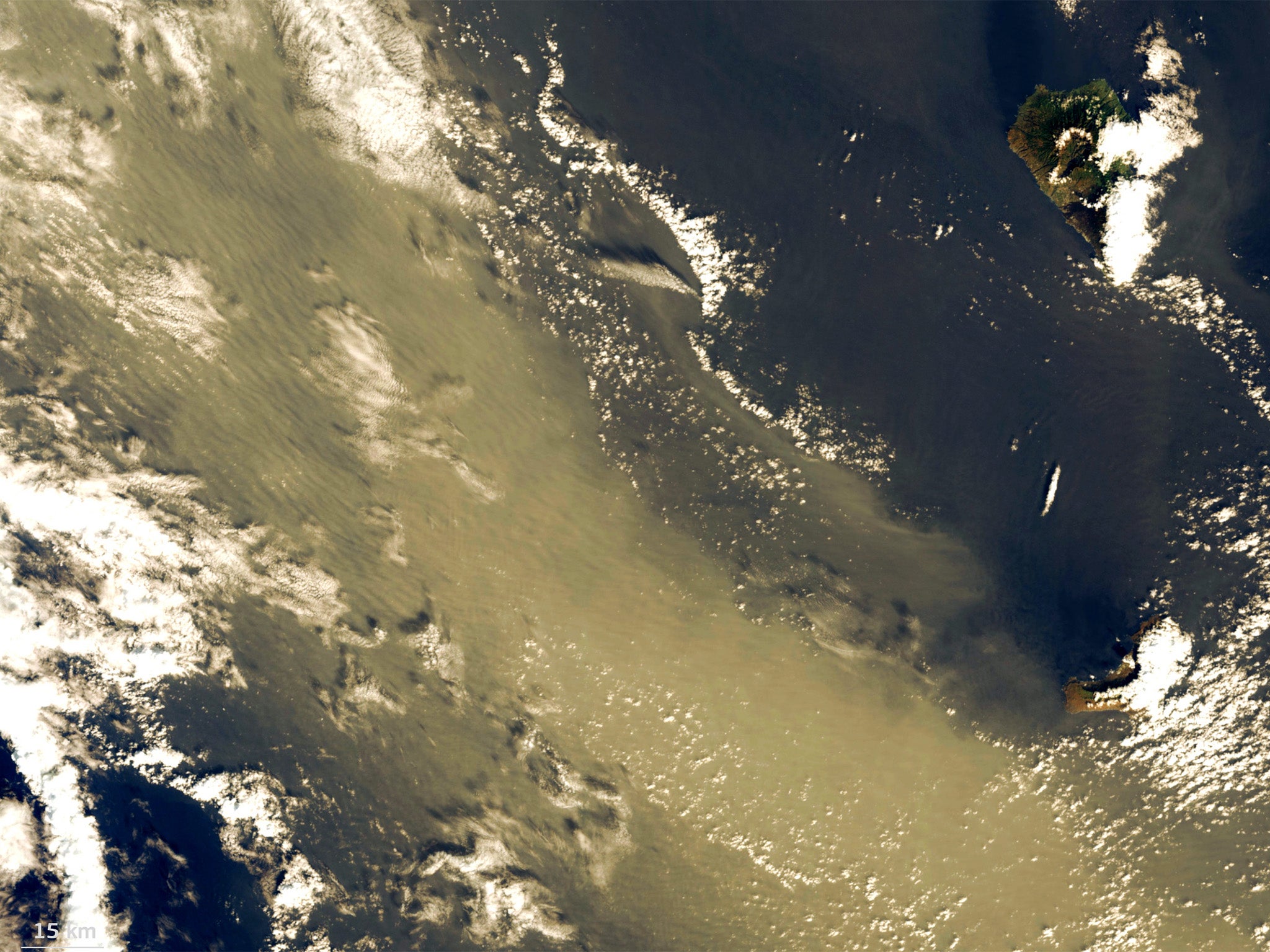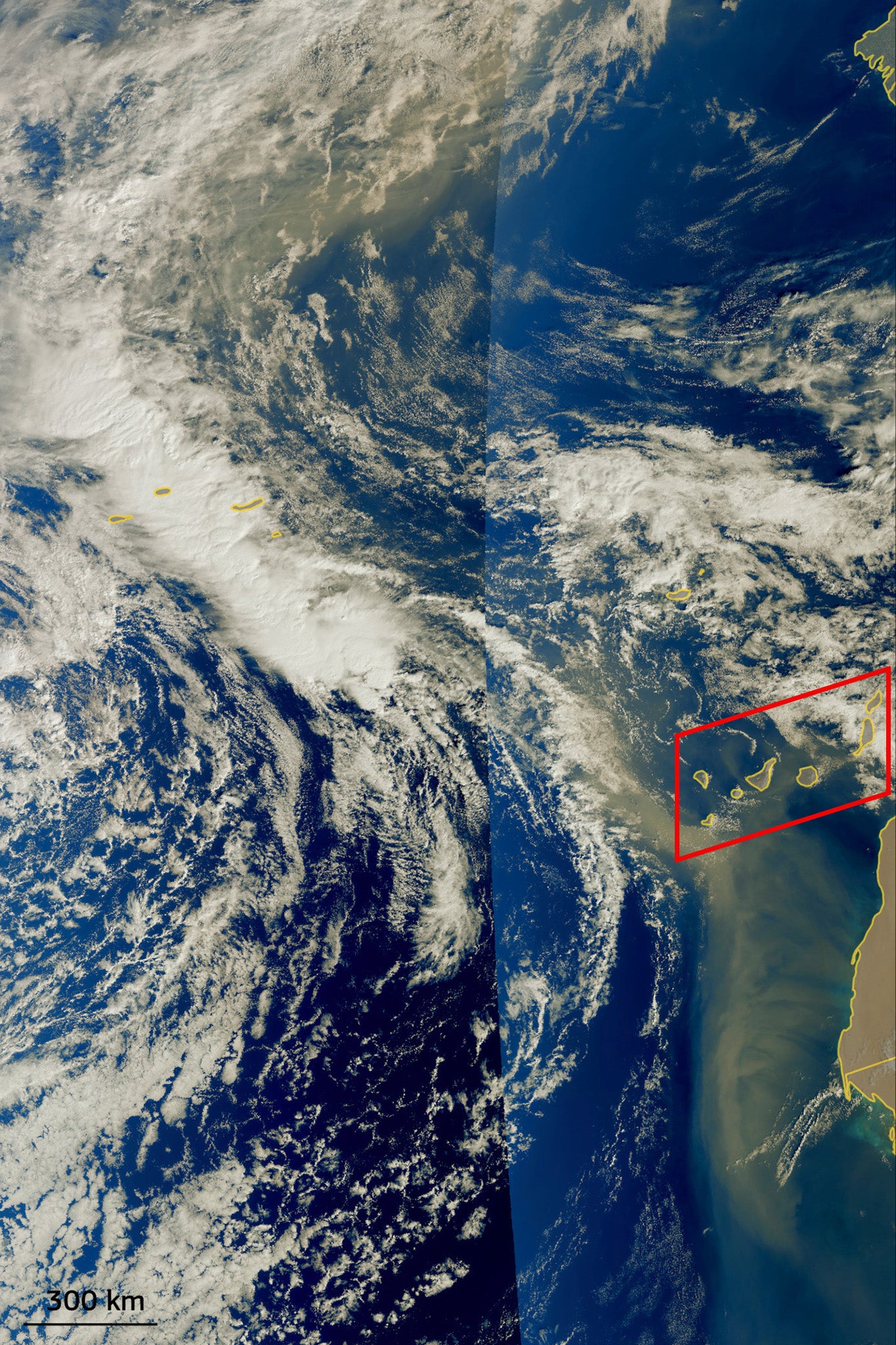Satellite images show 4,000km-long Saharan dust cloud across Atlantic Ocean
Forecasters say storm could stretch as far as Iceland

Your support helps us to tell the story
From reproductive rights to climate change to Big Tech, The Independent is on the ground when the story is developing. Whether it's investigating the financials of Elon Musk's pro-Trump PAC or producing our latest documentary, 'The A Word', which shines a light on the American women fighting for reproductive rights, we know how important it is to parse out the facts from the messaging.
At such a critical moment in US history, we need reporters on the ground. Your donation allows us to keep sending journalists to speak to both sides of the story.
The Independent is trusted by Americans across the entire political spectrum. And unlike many other quality news outlets, we choose not to lock Americans out of our reporting and analysis with paywalls. We believe quality journalism should be available to everyone, paid for by those who can afford it.
Your support makes all the difference.Images from space have captured the massive scale of a Saharan dust storm billowing out over the Atlantic Ocean.
The dust plume extends 4,000km (2,500 miles) from the coast of Mauritiania in Western Africa up to Ireland.
Pictures of the storm have been captured by Copernicus, the European Union's earth observation satellite.
The Copernicus Atmosphere Monitoring Service (Cams) forecast that the dust would recirculate towards northwest Europe and the North Sea in the coming days.
The dust could reach as far as Iceland nearly 5,000 miles away, forecasters said.
Last year, a Saharan dust storm which travelled over the Mediterranean sea had an impact on air quality in southern European cities including Barcelona and Marseille.

The US government agency National Oceanic and Atmospheric Administration (NOAA) tracks the movement of Saharan dust over the Atlantic throughout the year.
It said the phenomenon is caused by the Saharan Air Layer, a mass of dry air that forms over the desert throughout the year.
The dust is more well known for travelling west over the Atlantic but sometimes travels north towards Europe.
The dust can be harmful to humans as the fine particles can affect the respiratory system but it has been known to benefit plant life.
The NOAA said the dust storms bring minerals such as phosphorus that support soil health as far away as the Amazon rainforest. It said they can also suppress tropical storm development during hurricane season.
In summer 2020, a dust cloud was so huge it was dubbed “Godzilla” after winds swept nearly 24 tons from the Sahara to North and South America.
But scientists expect that the storms will be smaller in the coming decades due to climate change.
After “Godzilla”, Nasa scientists used satellite data and computer modelling to study the phenomenon. They predicted that the dust clouds would reach their smallest size in 20,000 years over the next century as the ocean warms.

Sea surface temperatures have a direct impact on wind speeds. If the northern Atlantic warms, then trade winds are weaker and cannot carry as much dust.
Weaker winds will also mean that bands of tropical rain can more easily move into desert regions, keeping the sand damp and less likely to be blown away.
Smaller dust clouds are part of a feedback loop that is adding to global heating. Particles in the air can reflect the sun so when the clouds are smaller or more sparse, more sunlight and heat reach the ocean, causing it to get even warmer.
Join our commenting forum
Join thought-provoking conversations, follow other Independent readers and see their replies
Comments